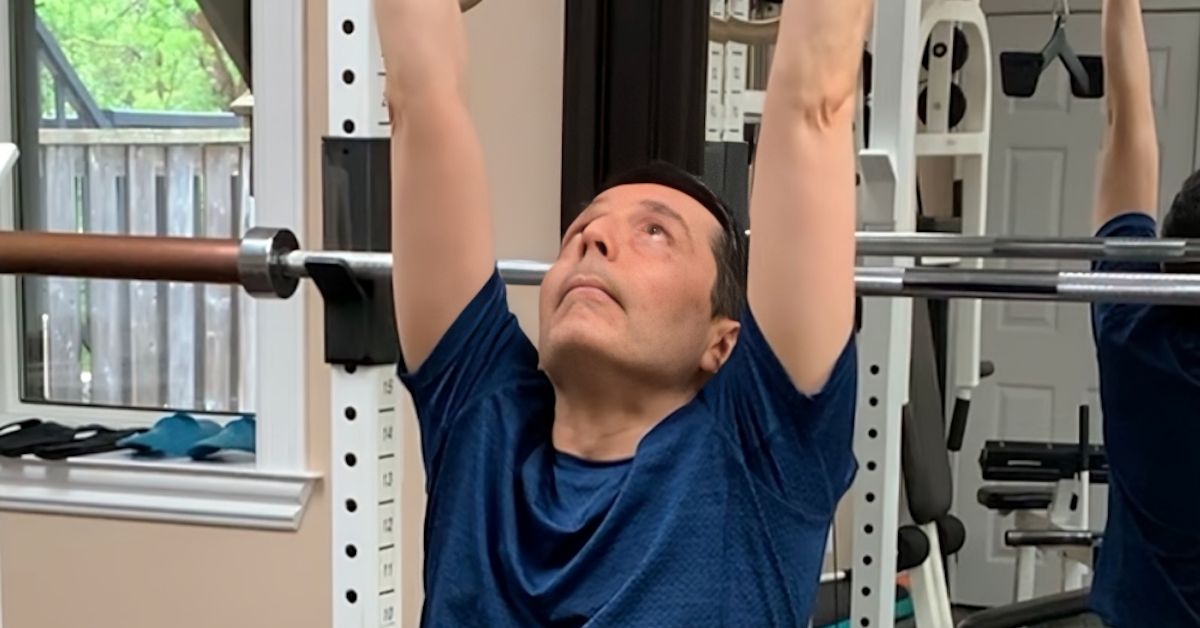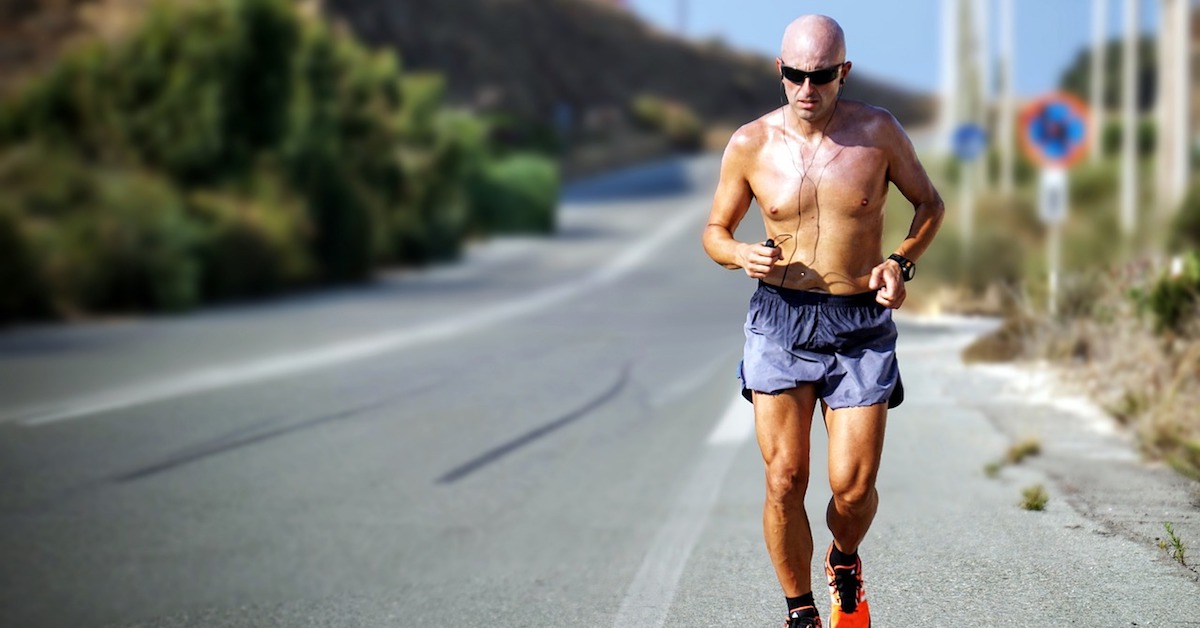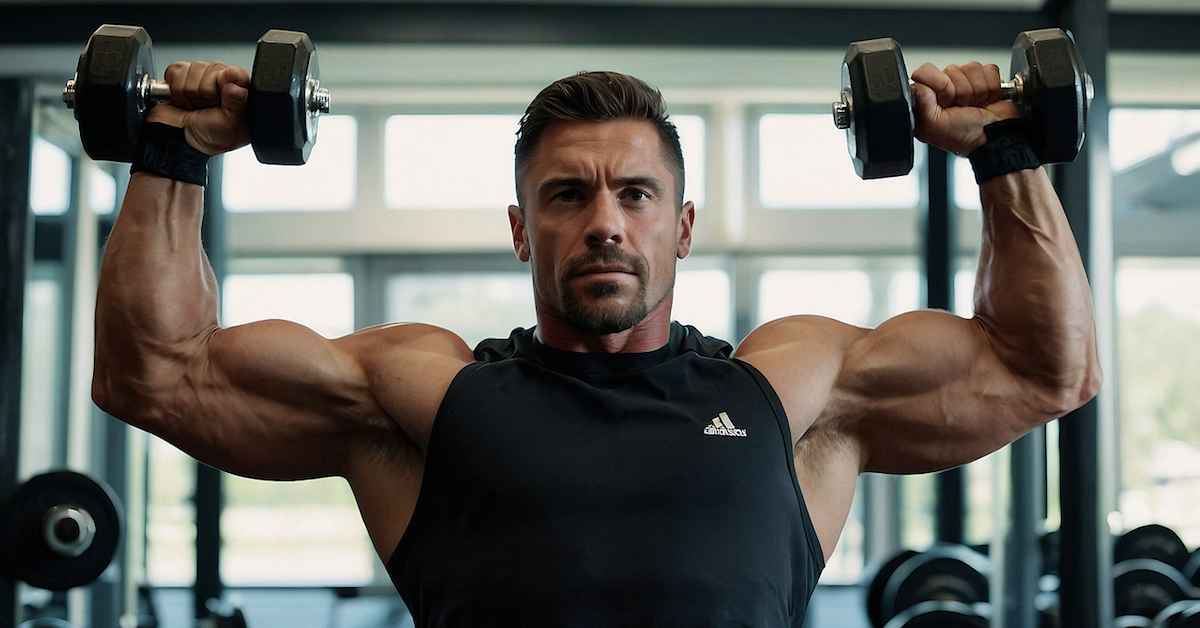Back in the March ’98 issue of Muscle Media, strength coach Charles Poliquin introduced a unique form of training that involved flexion of one limb with simultaneous extension of the opposite limb. For example, you would do a dumbbell curl with the right arm while doing a cable pressdown with the left arm. This method of “reciprocity” training was said to increase neuromotor drive by as much as 10%.
It sounded great at the time, but the method never took off due to a couple of challenges. For one, it only seemed to work for a limited portion of the upper body and was difficult to implement for the lower body. Another issue was finding the correct weight so that you could execute at the exact cadence and fatigue both sides simultaneously.
So, many people gave up on reciprocity training.
That’s unfortunate—because it works well if done right! You’ll need to use microloading implements like PlateMates to get the weight dialed in (no big deal), and it works more muscles than just the biceps and triceps. Here’s how to apply reciprocity training to the upper body, moving from proximal to distal muscles:
Shoulder Flexion and Extension
- Sets/Reps: 4 sets of 8–10 reps
- Tempo: 2-0-2-0
- Rest: 120 seconds
Start by pressing up for 2 seconds with the left arm while pulling down for 2 seconds with the right arm. Reverse the motion—pressing up with the right arm and pulling down with the left—for 2 seconds each side. Complete 8–10 reps in this alternating manner. Rest for 120 seconds, then switch the working side. Repeat the full sequence 3 more times.
Elbow Flexion and Extension
- Sets/Reps: 3 sets of 10–12 reps
- Tempo: 2-0-2-0
- Rest: 90 seconds
Same concept: curl with one arm while performing a pressdown with the other.
Do 3 sets of 10-12 reps at a 2-0-2-0 tempo with 90 seconds of rest.
Wrist Flexion and Extension
- Sets/Reps: 2 sets of 12–15 reps
- Tempo: 2-0-2-0
- Rest: 60 seconds
A bit trickier to execute but well worth it for grip and forearm development.
Alternating Dumbbell Curls
Here’s another way to implement reciprocity training—an idea I picked up from the late Dr. Mel Siff. Check out this excerpt from his classic book Supertraining:
If contraction of the agonists is preceded immediately by a maximal contraction of the antagonists, the force and EMG produced by the agonists is increased—a phenomenon called pre-tension by bodybuilders and reciprocal inhibition by physiotherapists, and regularly used in PNF conditioning. This pre-contraction of antagonists apparently diminishes inhibitory activity and facilitates more powerful agonist action in the subsequent contraction.
You can put this principle into action during alternating dumbbell curls. While one arm curls (biceps contraction), press the non-curling arm back against the bench (a strong isometric contraction of the triceps). This trick allows you to curl more weight, thanks to enhanced neuromuscular efficiency.
Can It Work for the Lower Body?
Absolutely!
One example: perform dynamic leg extensions while maintaining a static hamstring contraction, or reverse it. The opposing muscle contraction helps activate the working muscle more effectively.
Another lower-body variation I learned from exercise scientist Jerry Telle involves a high step-up with added resistance to the trail leg. You can use either an ankle weight or attach an ankle strap to a low pulley. As you step up with the lead leg, simultaneously hip flex the trail leg—a true full-body neuromotor challenge.
Final Thoughts
Reciprocity training isn’t for beginners, but if you’re looking to enhance neuromuscular efficiency, recruit more motor units, and break through training plateaus, this old-school gem might be worth revisiting. The key is precision: proper tempo, appropriate loading, and mindful execution.
Give it a shot—and don’t be surprised if you uncover strength you didn’t know you had.

Leo’s Chin-Up Journey (Day 1): From Zero to Hero
Can’t Do a Chin-Up? Neither Could Leo… But That’s About to Change. Leo started training with me back in September.

The Interference Effect: How to Maximize Strength and Endurance Gains
When it comes to fitness, many people strive to improve both strength and endurance. However, combining resistance and endurance training

How to Fix Lagging Body Parts: Proven Training Strategies
If you have a muscle group that refuses to grow, you have two options: Let’s break down both strategies and
follow
Error: No feed with the ID 2 found.
Please go to the Instagram Feed settings page to create a feed.
